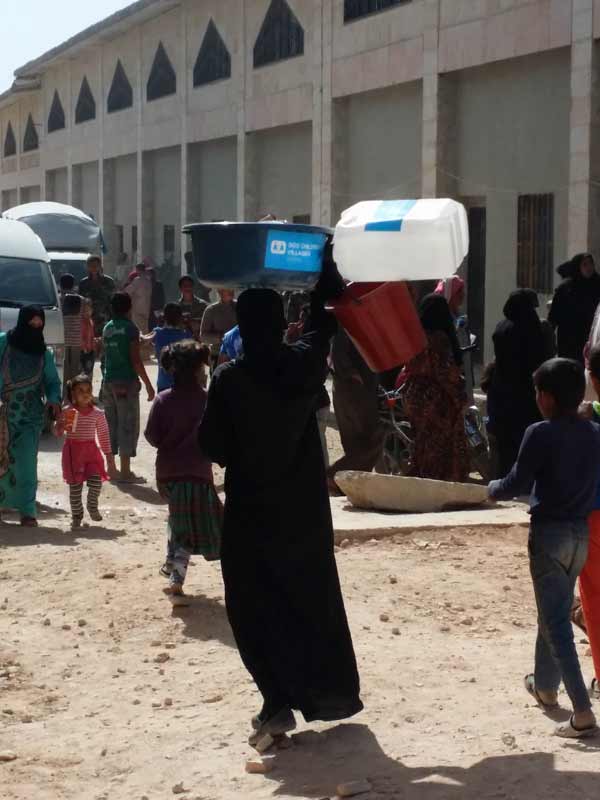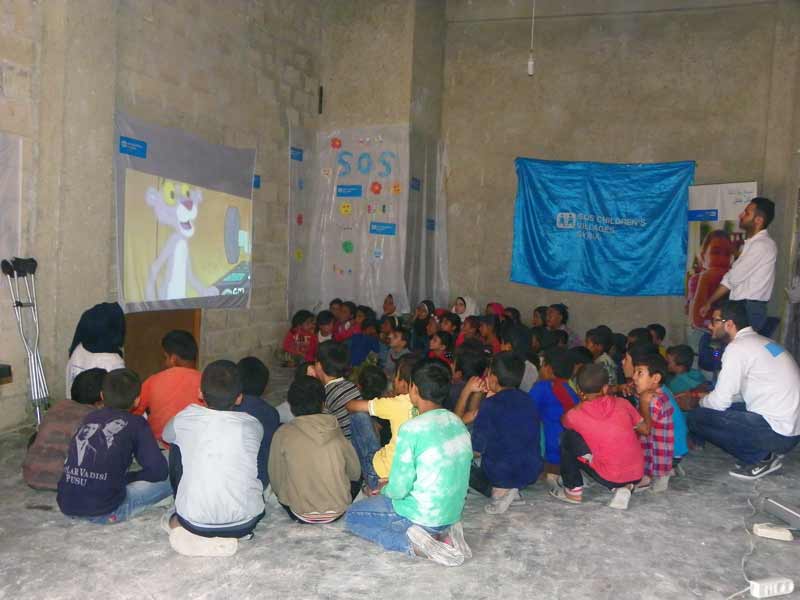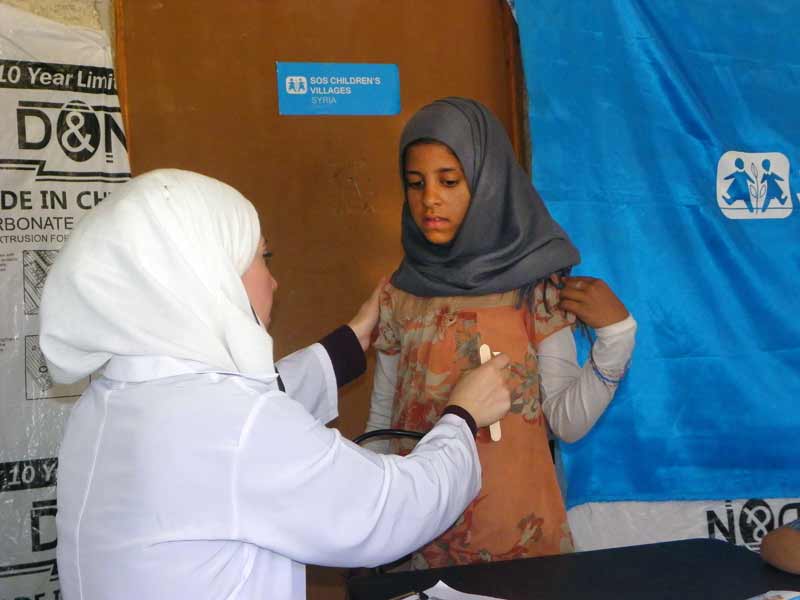Trauma expert: ‘There is no one more affected by war than a child’

Paul Boyle is a trauma expert and former regional psychosocial support coordinator and consultant for SOS Children’s Villages in East Africa. He has trained more than 2,000 SOS mothers, aunts and other employees in 17 countries in how to work with traumatized children. He recently visited the SOS Children's Villages emergency programs in Syria, Lebanon and the Central African Republic to conduct workshops on trauma healing.
The following is a snapshot of an interview with Mr Boyle, in which he talks about his observations and work in Syria.
 Q: You have worked in many countries for SOS Children’s Villages and in different types of emergencies where children are particularly vulnerable. How does the situation in Syria compare?
Q: You have worked in many countries for SOS Children’s Villages and in different types of emergencies where children are particularly vulnerable. How does the situation in Syria compare?
A: Many emergency zones in the world are transient – the emergency comes and it will go. However, in Syria there seems to be no end. War trauma is considered one of the worst forms of trauma as the dangers never go away. Children begin to see the abnormal as normal and the normal as abnormal. They grow up in war and conflict, and they may grow up to participate in continuing the war. This is a situation we also see with Palestinian children. Syrian children know nothing but war, conflict, death and destruction, so you can imagine how this affects their world view.
The Syrian, Iraqi and Afghanistani children who have fled to Europe for protection are also affected by trauma. You can take these children from the war and the trauma. But it is a far more difficult task to take the war and trauma out of their minds, hearts and bodies.
Q: What are the tell-tale signs of trauma in children?
A: The cognitive signs are poor verbal skills, memory problems, difficulty in accomplishing tasks, poor attention span and learning disabilities.
The behavioural signs include attention seeking, aggressive behaviour, acting out traumas [re-enactment]. Traumatised children may scream or cry excessively, be easily startled, unable to trust others or make friends. They may fear adults who may remind them of the trauma. Or they may be anxious, fearful, irritable, sad and withdrawn.
Physiologically, they may suffer from poor appetite or digestive problems. Pain – headaches and stomach aches, insomnia, nightmares, bed wetting, and being clingy are also tell-tale signs.
 Q: What about adults? How do we know when a parent – or a co-worker – is at risk?
Q: What about adults? How do we know when a parent – or a co-worker – is at risk?
A: There is a danger of developing vicarious [secondary] trauma. They will develop some of the symptoms the child has and this in turn brings about poor health, poor concentration, burnout, anxiety and possibly depression.
Q: Syria is now in its sixth year of civil war. What can be done to help the generation of children that has grown up with conflict?
A: There is no one more affected by war than a child. The long-term damage is difficult to reverse. The child’s brain goes automatically into a danger and fear mode and they grow up like this. It affects them in numerous ways:
- Poor concentration
- Limited ability to retain information, hence poor academic performance
- Inability to trust - particularly adults
- Emotional disorders that lead to anger, rage, depression and even violence or self-harm
- Half of traumatised children have a high chance of developing addictions
What can we do to help? We need to stop war and conflict, mass destruction and death. The Western world believes that bombing Syria to pieces is a remedy in addressing the war. However, it merely adds to war and conflict. Children are in constant threat, fear and danger. Better political solutions are needed to resolve the current situation in Syria.
Children need to learn that the world is a good place and they need to see this around them. Instead of destruction, they need to see construction of schools, hospitals and play areas.
 Q: Describe your impressions of what you saw in Syria?
Q: Describe your impressions of what you saw in Syria?
A: I am very impressed by the work of SOS Children’s Villages in Syria. It is incredible the love and compassion SOS staff show for poor, vulnerable and marginalised people. They look for poor children who are homeless and destitute, and place them in one of the facilities SOS manages in Damascus. They have teams on the ground in Aleppo providing emergency support even though the dangers for staff are high. They focus on the needs of the people and do what they can despite the danger and challenges.
What strikes me most is the mental and psychological health of Syrian staff – they are all doing very well. I have rarely witnessed such energy and dynamism, and I am most impressed by the good they do by loving, caring and respecting the children.
